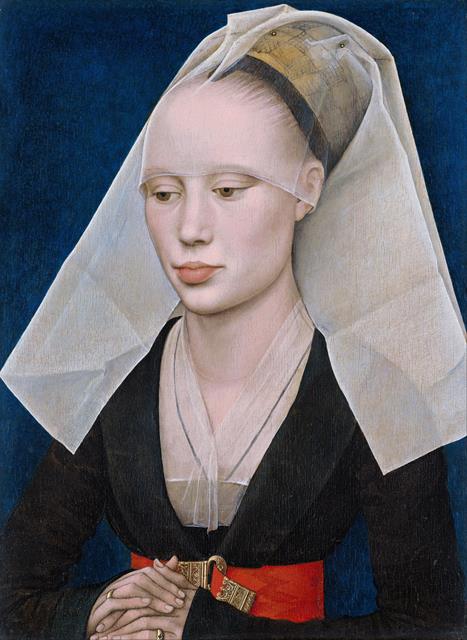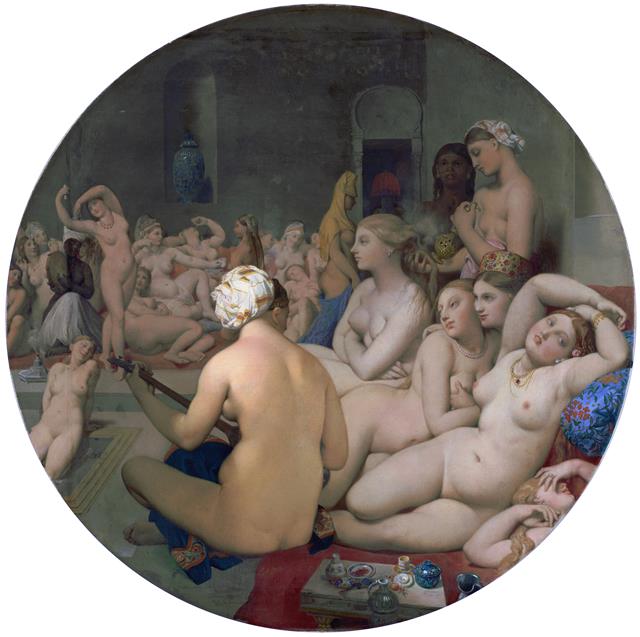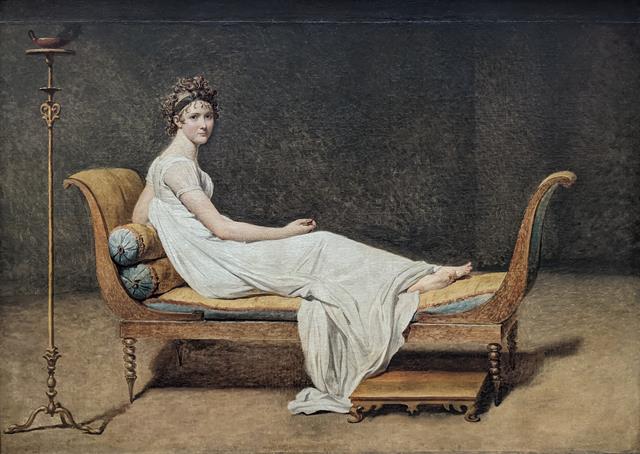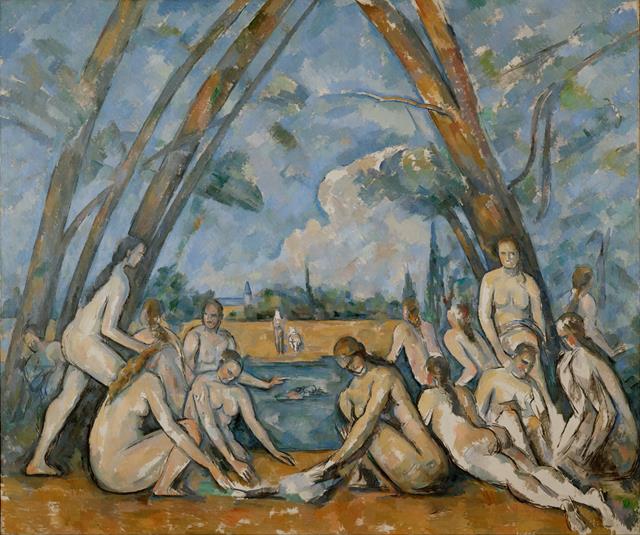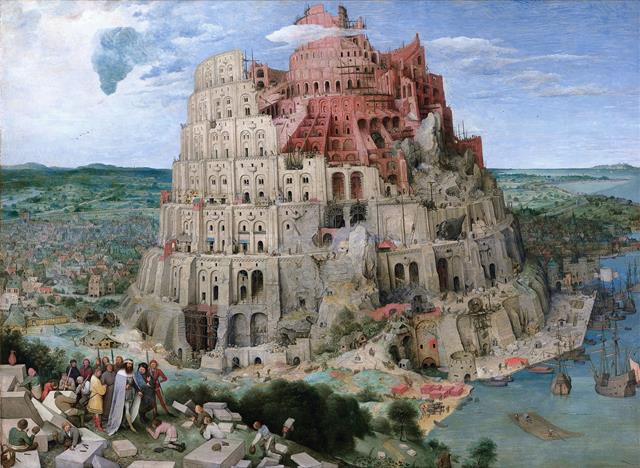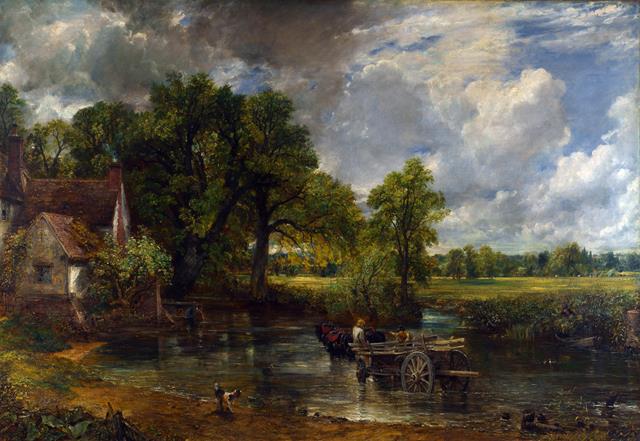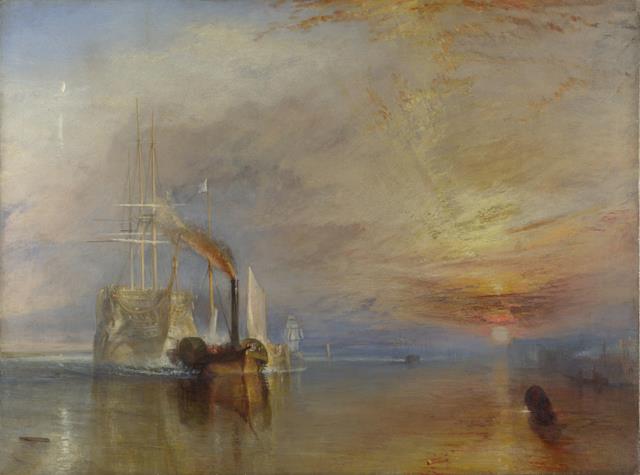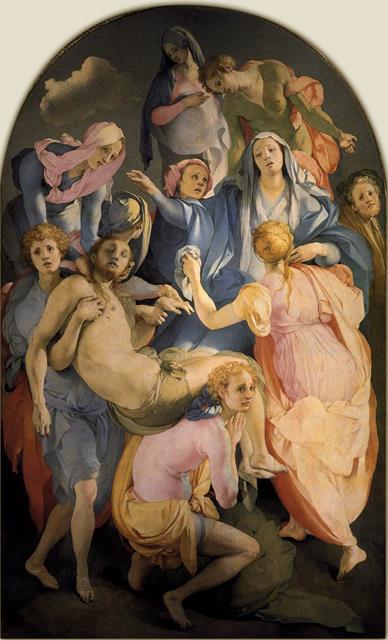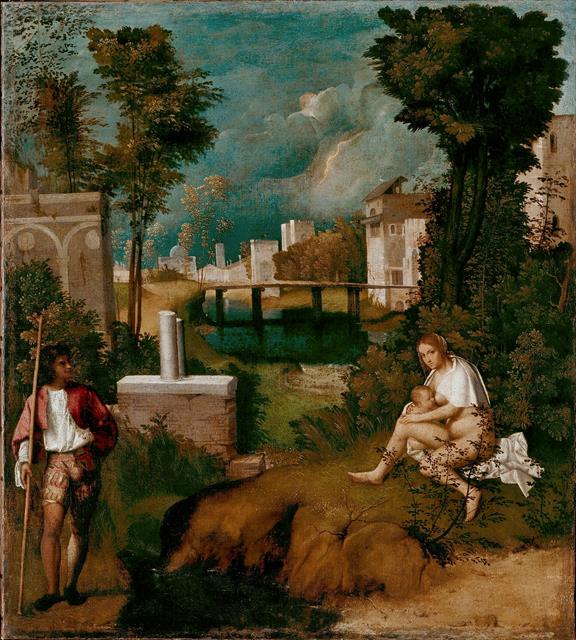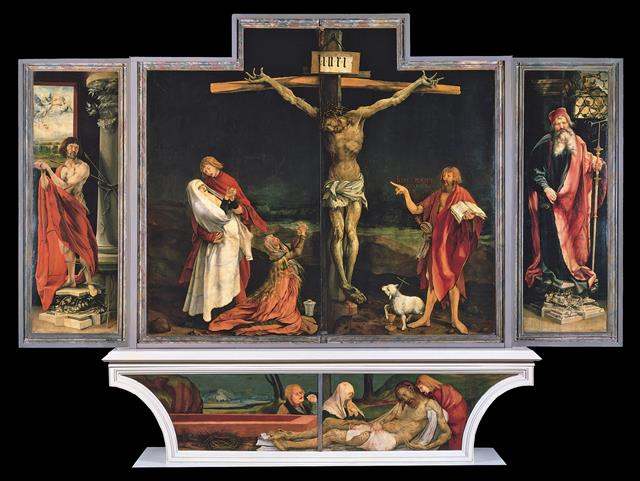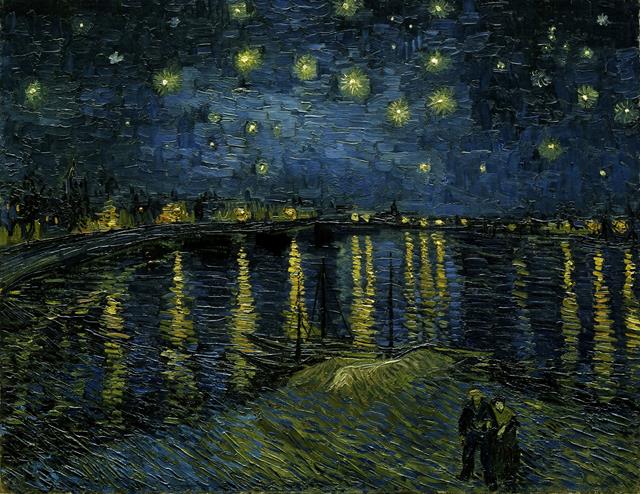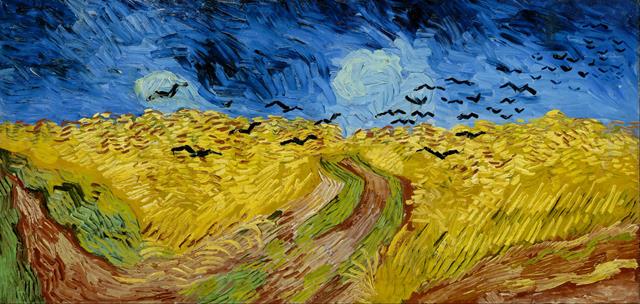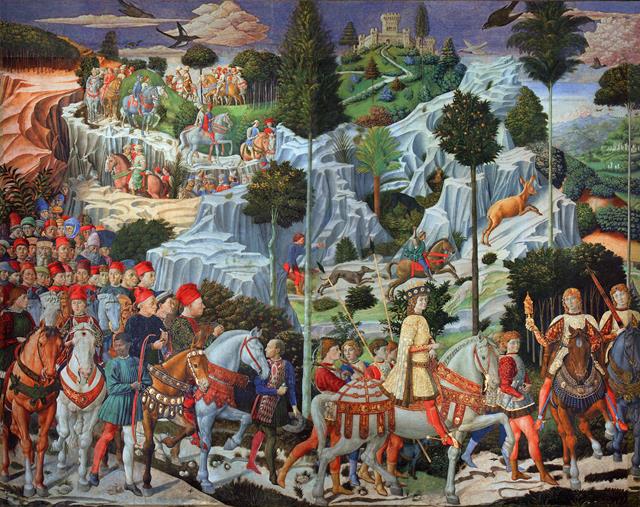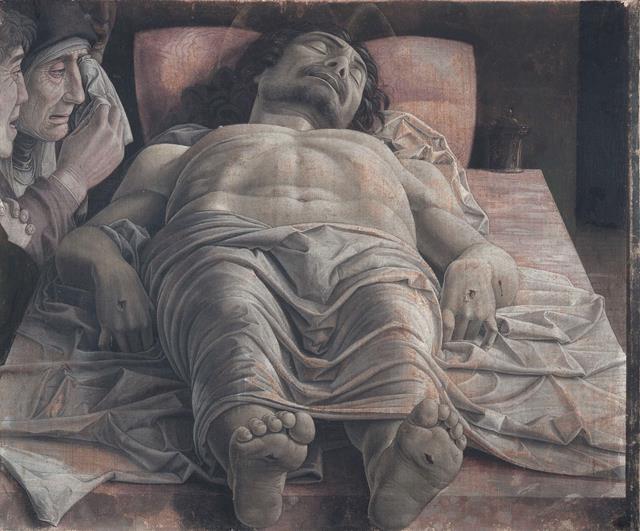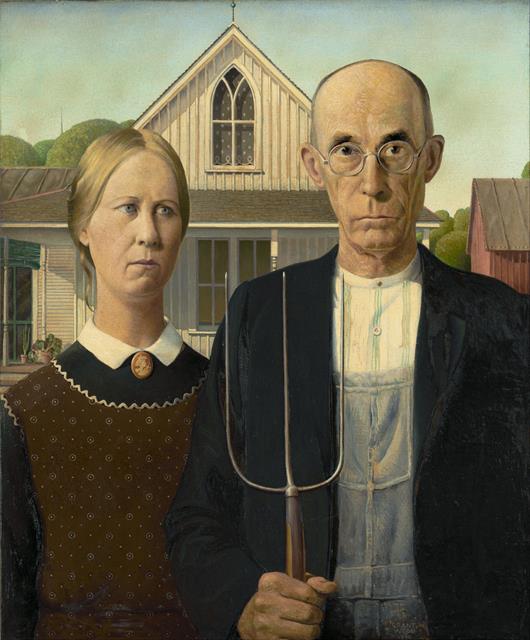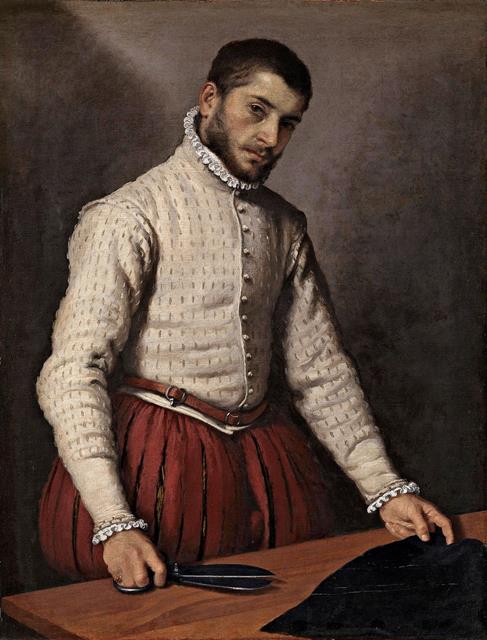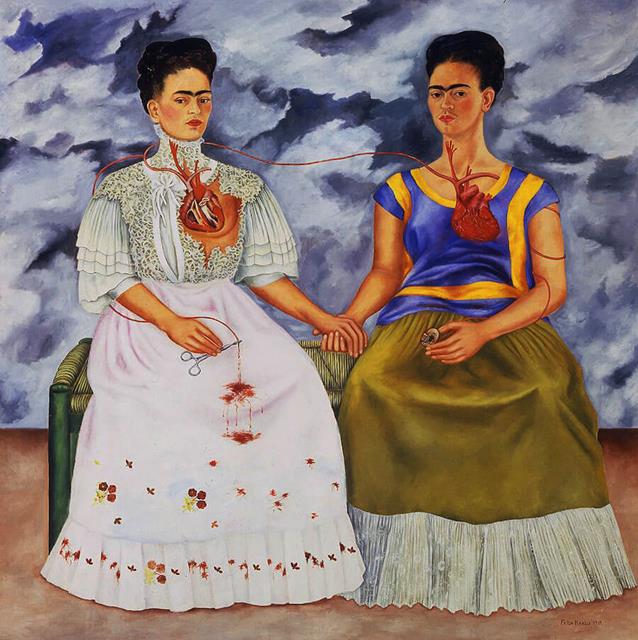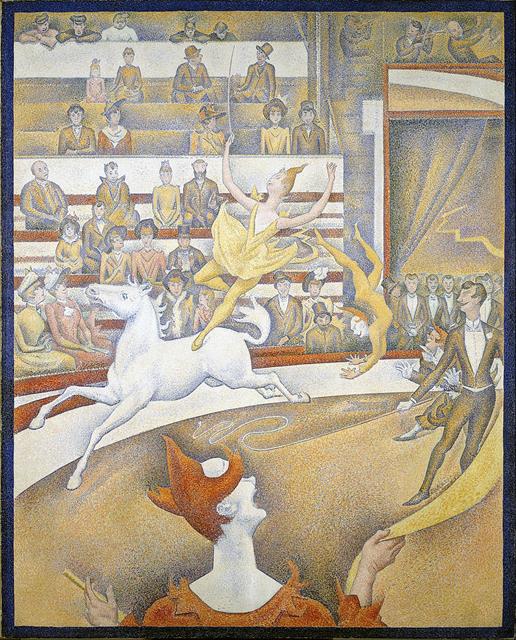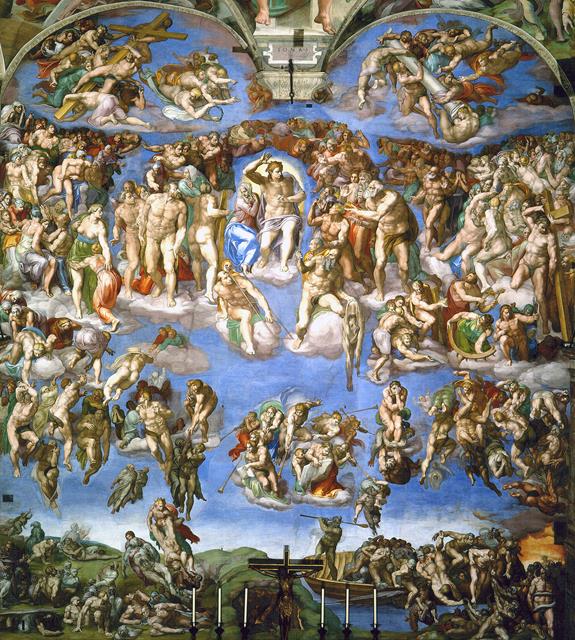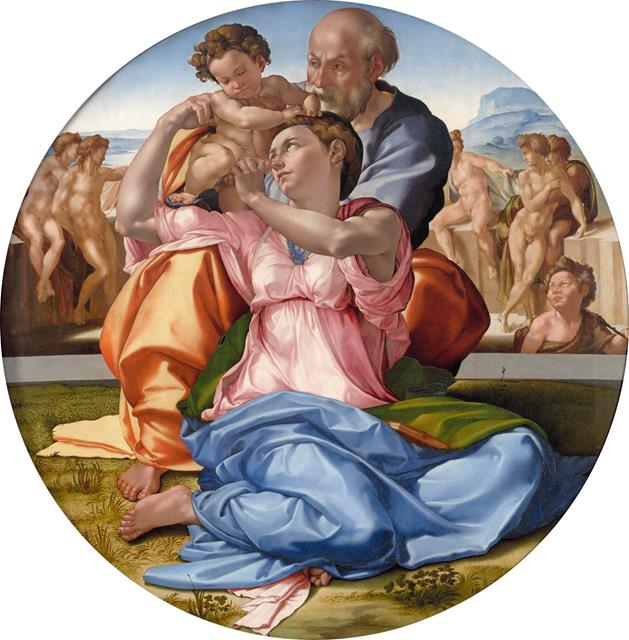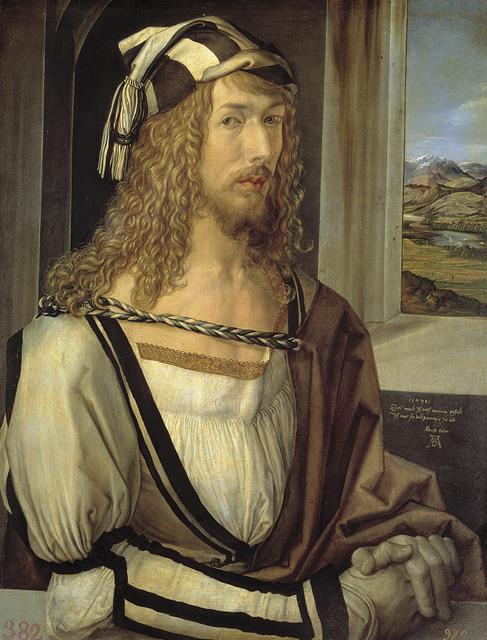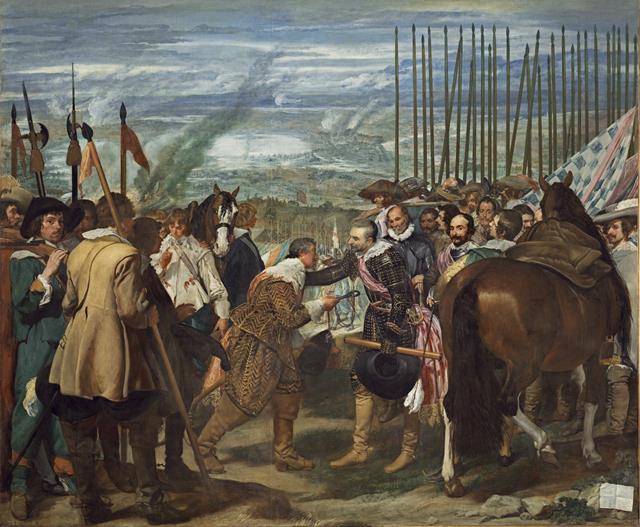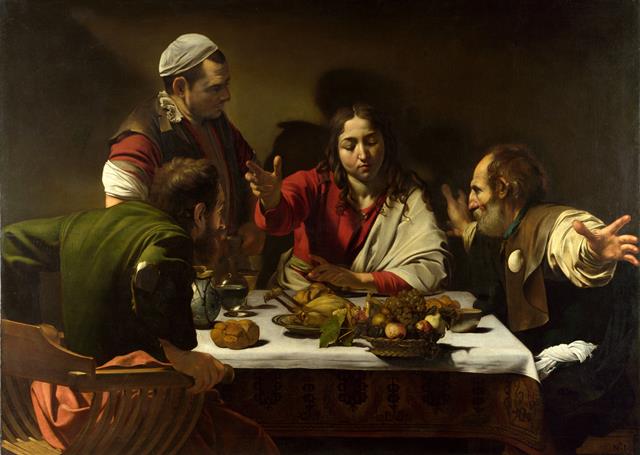Discover the Finest Artworks: Top 200 Paintings Worldwide (#100–76)
Explore our meticulously researched compilation showcasing the 200 greatest paintings globally. Each painting is accompanied by comprehensive details, including size, location, materials used, its frequency in experts' lists, and our own rating.
Table of Contents
ToggleYou have reached #100–76 of our list of the greatest paintings in the world. Enjoy exploring!
Click on the following links to discover #200–176, #175–151, #150–126, #125–101, #100–76, #75–51, #50–25, #24–1 of our list of the 200 best paintings in the world.
Our list is curated through an in-depth analysis of over 20 influential art books in various languages and multiple reputable sources.
Uncover our methodology and the selected art books behind this definitive top 200 list by clicking here.
#100 | Rogier van der Weyden, "Portrait of a Lady"
A Testament to Van Der Weyden’s Ability to Convey the Essence of His Subjects with Sensitivity and Insight
The subject, whose identity remains enigmatic, is depicted with a gaze that seems to pierce through the canvas, inviting viewers to contemplate her inner thoughts and feelings.
Surrounding her are symbols of wealth, piety, and status, suggesting a multifaceted personality and social standing.
The careful attention to detail, from the folds of her garments to the reflection in her eyes, adds to the painting's realism and depth.
Date: 1460
Dimensions: 34 cm × 25.5 cm (13 in × 10 in) | very small
Material: Oil on wood
Collection: National Gallery of Art, Washington, DC 🇺🇸
Art Movement: Northern Renaissance 🇳🇱
Experts’ Choice: 11x
Our Score: 5.90
#99 | Robert Campin (Master of Flémalle) and workshop, "The Annunciation: The Merode Altarpiece"
A Testament to Religious Devotion
The painting is a triptych, consisting of three panels hinged together, with the central panel depicting the Annunciation scene and the wings portraying Joseph and the donor couple.
The setting of the Annunciation takes place in a domestic interior, rather than the traditional architectural space seen in earlier depictions, adding a sense of familiarity and intimacy to the scene.
"The Merode Altarpiece" was likely commissioned for private devotion in a wealthy Flemish household, reflecting the growing interest in domestic spirituality during the Northern Renaissance.
Date: c. 1425–1428
Dimensions: 64.5 x 117.8 cm (25.4 × 46.4 in) | large
Material: Oil on oak wood
Collection: The Cloisters, New York City 🇺🇸
Art Movement: Northern Renaissance, Flemish 🇧🇪
Experts’ Choice: 12x
Our Score: 5.90
#98 | Jean-Auguste-Dominique Ingres, “The Turkish Bath”
Exemplifies a Fascination with the Orient, Offering Viewers a Glimpse into a World of Luxury, Leisure, and Intrigue
Ingres drew inspiration from both classical art and contemporary Orientalist paintings, synthesizing these influences into a unique and compelling composition.
The scene is bathed in a soft, diffused light, casting a dreamlike ambiance over the figures as they engage in their ritualistic activities.
The painting's allure lies not only in its aesthetic beauty but also in its exploration of themes such as femininity, exoticism, and the gaze.
💡 The figure from The Valpinçon Bather (another very famous painting of Ingres) appears almost identically as the central element of the later composition, but now plays a mandolin.
Date: 1862–63
Dimensions: 108 cm × 110 cm (42 1/2 in × 43 5/16 in) | large
Material: Oil on canvas glued to wood
Collection: Musée du Louvre, Paris 🇫🇷
Art Movement: Neoclassicism, French 🇫🇷
Experts’ Choice: 12x
Our Score: 5.90
#97 | Jacques-Louis David, “Portrait of Madame Recamier”
Madame Récamier’s Enigmatic Expression Invites Viewers to Ponder Her Inner Thoughts and Emotions
The essence of Jacques-Louis David's "Portrait of Madame Récamier" lies in its portrayal of timeless elegance and sophistication.
The painting was commissioned by Madame Récamier herself, reflecting her desire to be immortalized by one of the era's most celebrated artists.
Jacques-Louis David originally intended to depict Madame Récamier in a more formal pose, but she insisted on reclining casually for the portrait, adding to its charm and intimacy.
Date: 1800
Dimensions: 173 × 243 cm (68.1 × 95.6 in) | very large
Material: Oil on canvas
Collection: Musée du Louvre, Paris 🇫🇷
Art Movement: Neoclassicism, French 🇫🇷
Experts’ Choice: 12x
Our Score: 5.90
#96 | Paul Cézanne, "The Bathers (The Large Bathers)"
Cézanne’s Use of Geometric Shapes and Bold Color Choices Foreshadowed the Rise of Abstraction in the 20th Century
Cézanne's exploration of geometric shapes and the interplay of light and shadow set a new standard for modern art.
His groundbreaking technique laid the foundation for later movements like Cubism.
The painting's scale and complexity reflect Cézanne's ambition to create a monumental work that would rival the grandeur of classical art.
Date: 1887
Dimensions: 210.5 cm × 250.8 cm (82.9 in × 98.7 in) | extremely large
Material: Oil on canvas
Collection: Philadelphia Museum of Art 🇺🇸
Art Movement: Post-Impressionism, French 🇫🇷
Experts’ Choice: 13x
Our Score: 5.90
#95 | Pieter Bruegel the Elder, "The (Great) Tower Of Babel" (Vienna Version)
Bruegel’s Tower of Babel Captures the Folly of Human Ambition
The painting depicts the biblical story of the Tower of Babel, where mankind's attempt to build a tower to the heavens is thwarted by divine intervention, resulting in chaos and the dispersion of peoples and languages.
The intricate detail extends beyond the tower itself to depict a bustling landscape filled with human activity, showcasing Bruegel's mastery of narrative storytelling within a single frame.
Bruegel painted two versions of the Tower of Babel, with the Vienna version being the more renowned and elaborate of the two.
Date: 1563
Dimensions: 114 cm × 155 cm (45 in × 61 in) | large
Material: Oil on wood panel
Collection: Kunsthistorisches Museum, Vienna 🇦🇹
Art Movement: Northern Renaissance, Flemish 🇧🇪
Experts’ Choice: 14x
Our Score: 5.90
#94 | John Constable, “The Hay Wain”
Immerses Viewers in the Splendor of Nature
The painting is a top 100 painting in the world because it captures the essence of the English countryside with remarkable realism, immersing viewers in a tranquil scene of pastoral beauty.
The attention to detail in the rendering of nature, from the play of light on the water to the intricate foliage of the trees, showcases Constable's unparalleled skill as a landscape artist.
Constable's painting exemplifies the Romantic ideals of reverence for nature and the beauty of the unspoiled countryside.
Date: 1821
Dimensions: 130.2 cm × 185.4 cm (51+1⁄4 in × 73 in) | large
Material: Oil on canvas
Collection: National Gallery, London 🇬🇧
Art Movement: Romanticism, English 🇬🇧
Experts’ Choice: 14x
Our Score: 5.90
#93 | J. M. W. Turner, "The Fighting Temeraire Tugged to Her Last Berth to Be Broken Up"
A Captivating Commentary on Industrialization and Tradition
One fascinating aspect of the painting is how Turner saw a real decommissioned warship being towed for dismantling, which inspired him.
Despite his usual impressionistic style, he paid close attention to detail when depicting the ship and its surroundings.
The painting symbolizes the transition from an old era to a new one with technology, adding to its significance.
The essence lies in the emotional intensity conveyed through the intricate details, exploring themes of loss and the transient nature of life.
💡 In a poll organised by BBC Radio 4's Today programme in 2005, the painting was voted the nation's favourite painting and in 2020 it was included on the new £20 banknote.
Date: 1839
Dimensions: 90.7 cm × 121.6 cm (35.7 in × 47.9 in) | large
Material: Oil on canvas
Collection: National Gallery, London 🇬🇧
Art Movement: Romanticism, English 🇬🇧
Experts’ Choice: 14x
Our Score: 5.90
#92 | Pontormo (Jacopo Carucci), “The Deposition of Christ”
Captivates Viewers with Its Haunting Portrayal of Grief and Loss Immersing Viewers in the Drama Unfolding before Their Eyes
"The Deposition of Christ" is notable for its innovative approach to composition, with figures arranged in a pyramid-like structure that directs the viewer's gaze towards the focal point of Christ's body.
Pontormo's mastery of color and form imbues the composition with a sense of otherworldly beauty and transcendence, inviting viewers to contemplate the divine mysteries it evokes.
The painting encapsulates the essence of Mannerism, a stylistic movement characterized by exaggerated proportions, elongated figures, and heightened emotional intensity.
Date: c. 1525–28
Dimensions: 313 cm × 192 cm (123 in × 76 in) | extremely large
Material: Tempera on wood
Collection: Capponi Chapel of S. Felicità, Florence 🇮🇹
Art Movement: Mannerism, Italian 🇮🇹
Experts’ Choice: 7x
Our Score: 5.90
#91 | Giorgione, “The Tempest”
A Sense of Permanently Suspended Enigma
Giorgione's "The Tempest" captivates viewers, inviting endless interpretation and speculation about the relationship between the figures and the stormy landscape.
Art historians have speculated the woman nursing an infant may represent Madonna and Child, a gypsy woman, a symbol of fertility, Madonna and Child or the allegorical figure of Charity. The man standing to the left has been identified as a soldier, a shepherd, a gypsy, or a member of a club of unmarried men.
The landscape is a not a mere backdrop but forms an important contribution to early landscape painting.
Date: c. 1508
Dimensions: 83 cm × 73 cm (33 in × 29 in) | medium-sized
Material: Oil on canvas
Collection: Gallerie dell'Accademia, Venice 🇮🇹
Art Movement: Early Renaissance, Venetian School 🇮🇹
Experts’ Choice: 16x
Our Score: 5.90
#90 | Matthias Grünewald, “Isenheim Altarpiece, closed: Crucifixion”
Inspires Reverence and Awe
The painting's emotional depth and intensity captivate viewers, evoking a profound sense of empathy and contemplation
Its meticulous attention to detail, from the agonized expressions of the figures to the intricacies of the landscape, showcases Grünewald's exceptional skill and mastery of his craft.
The altarpiece's panels are designed to be opened and closed, allowing for different scenes to be displayed depending on the liturgical calendar.
💡 The Isenheim Altarpiece was commissioned for the hospital of St. Anthony in Isenheim, where it served as a visual aid in comforting and healing the sick.
Date: 1515
Dimensions: 269 x 307 cm (105.9 ×. 120. 8 in) | extremely large
Material: Oil on panel
Collection: Musée d’Unterlinden, Colmar 🇫🇷
Art Movement: Northern Renaissance, German 🇩🇪
Experts’ Choice: 17x
Our Score: 5.90
#89 | Vincent van Gogh, “Starry Night over the Rhone”
Captures the Majesty of the Night Sky
The painting captures a moment of serene beauty, depicting the night sky ablaze with stars reflected in the shimmering waters of the Rhone River.
Van Gogh's expressive style imbues the scene with a sense of movement and vitality, drawing viewers into the nocturnal atmosphere. Its innovative use of color and brushwork revolutionized the art world of its time.
The juxtaposition of warm and cool tones adds depth and dimension to the scene, enhancing its visual impact and emotional resonance.
Date: 1888
Dimensions: 72.5 cm × 92 cm (28.5 in × 36.2 in) | large
Material: Oil on canvas
Collection: Musée d'Orsay, Paris 🇫🇷
Art Movement: Post-Impressionism, Dutch/French 🇳🇱
Experts’ Choice: 5x
Our Score: 6.00
#88 | Vincent van Gogh, “Wheatfield with Crows”
Van Gogh’s Final Artistic Statement Symbolizes Life’s Contradictions and the Artist’s Inner Turmoil
The painting portrays a vast wheatfield under a turbulent sky, with ominous crows hovering overhead.
"Wheatfield with Crows" stands as a testament to the artist's relentless pursuit of truth and beauty, even in the darkest of times.
Amidst the chaos, patches of golden wheat emerge, symbolizing resilience and vitality in the face of adversity.
💡 Wheatfield with Crows was painted in July 1890, in the last weeks of van Gogh's life.
Date: 1890
Dimensions: 50.2 cm × 103 cm (19.8 in × 41 in) | medium-sized
Material: Oil on canvas
Collection: Van Gogh Museum, Amsterdam 🇳🇱
Art Movement: Post-Impressionism, Dutch/French 🇳🇱
Experts’ Choice: 6x
Our Score: 6.00
#87 | Benozzo Gozzoli, "Journey of the Magi (East Wall), Procession of the Youngest King"
Inviting Viewers to Contemplate Not Only the Biblical Story but Also the Cultural Milieu in Which It Was Created
Set against a backdrop of lush landscapes and towering architecture, the painting depicts Caspar, the youngest Magus, accompanied by a retinue of attendants and exotic animals as they traverse the desert terrain.
This figure has often been taken for an idealized Lorenzo il Magnifico, who was still a boy when the fresco was completed.
After them is a procession of illustrious Florentines, the members of the Art Guilds and Benozzo Gozzoli himself. The painter looks out at the viewer and can be recognized for the scroll on his red hat.
Date: 1459–1462
Dimensions: 405 x 516 cm (13.2 x 16.9 ft) | extremely large
Material: Fresco
Collection: Magi Chapel of the Palazzo Medici-Riccardi, Florence 🇮🇹
Art Movement: Early Renaissance, Italian 🇮🇹
Experts’ Choice: 14x
Our Score: 6.00
#86 | Andrea Mantegna, “The Lamentation over the Dead Christ”
Demonstrates Incredible Mastery of Perspective and Composition
Mantegna's skillful use of perspective draw viewers into the scene, allowing them to empathize with the figures' anguish and contemplate the significance of Christ's sacrifice.
The painting captures the moment of intense grief and despair following Christ's death, conveying the profound emotional impact of the event.
Date: 1490
Dimensions: 68 cm × 81 cm (27 in × 32 in) | medium-sized
Material: Tempera on canvas
Collection: Pinacoteca di Brera, Milan 🇮🇹
Art Movement: Early Renaissance, Florentine School 🇮🇹
Experts’ Choice: 16x
Our Score: 6.00
#85 | Grant Wood, "American Gothic"
Stands as a Timeless Symbol of American Identity and Resilience
The painting's stark contrast between the stern-faced farmer and his daughter standing in front of a simple farmhouse captivates viewers with its raw simplicity. Despite their austere appearance, there is an undeniable sense of strength and pride in their demeanor.
"American Gothic" transcends its portrayal of a specific time and place to become a universal symbol of resilience, perseverance, and the enduring spirit of the American people.
💡 The models for the painting were Wood's sister, Nan, and his dentist, Dr. Byron McKeeby, lending a personal touch to the iconic image.
Date: 1930
Dimensions: 78 cm × 65.3 cm (30.7 × 25.7 in) | medium-sized
Material: Oil on beaverboard
Collection: Art Institute of Chicago, Chicago 🇺🇸
Art Movement: American Regionalism (Modernism), American 🇺🇸
Experts’ Choice: 16x
Our Score: 6.10
#84 | Giovanni Battista Moroni, “The Tailor”
Celebrates Craftsmanship and Dignity
The painting captivates viewers with its striking realism, as Moroni skillfully renders the tailor's expression and posture, conveying a sense of introspection and dignity.
The essence of "The Tailor" lies in its portrayal of a solitary figure, the tailor, immersed in his work yet conveying a sense of introspection and dignity.
Date: 1565–1570
Dimensions: 99.5 cm × 77 cm (39.2 in × 30 in) | large
Material: Oil on canvas
Collection: National Gallery, London 🇬🇧
Art Movement: Renaissance, Italian 🇮🇹
Experts’ Choice: 8x
Our Score: 6.20
#83 | Frida Kahlo, “The Two Fridas”
Groundbreaking Portrayal of Dual Identity and Inner Turmoil
Kahlo's unique style, blending elements of surrealism and Mexican folk art, captivates viewers with its rawness and authenticity.
The painting "The Two Fridas" occupies a prominent position in the annals of art history due to its groundbreaking portrayal of dual identity and inner turmoil.
Date: 1939
Dimensions: 173.5 cm × 173 cm (68.3 in × 68 in) | very large
Material: Oil on canvas
Collection: Museo de Arte Moderno, Mexico City 🇲🇽
Art Movement: Surrealism, Mexican 🇲🇽
Experts’ Choice: 8x
Our Score: 6.20
#82 | Georges Seurat, “The Circus”
Tiny Dots of Color Coalesce to Form a Cohesive and Immersive Image
Georges Seurat's "The Circus" is considered a masterpiece of painting for its innovative technique known as pointillism, where small dots of color are meticulously arranged to form a cohesive image.
The painting captures the dynamism and excitement of the circus scene with remarkable precision and detail, showcasing Seurat's mastery of composition and perspective.
💡 "The Circus" was completed by Georges Seurat in 1891, just two years before his untimely death at the age of 31.
Date: 1891
Dimensions: 185 cm × 152 cm (72.8 in × 59.8 in) | very large
Material: Oil on canvas
Collection: Musée d'Orsay, Paris 🇫🇷
Art Movement: Pointillism, French 🇫🇷
Experts’ Choice: 10x
Our Score: 6.20
#81 | Michelangelo Buonarroti, "The Last Judgement"
Unfolds a Narrative of Cosmic Proportions
The painting portrays the moment when Christ, surrounded by saints and angels, separates the blessed from the damned, consigning the latter to hell while welcoming the former into heaven.
This monumental work explores themes of salvation, damnation, redemption, and divine justice, inviting viewers to contemplate the eternal consequences of human actions and the mercy of God.
💡 "The Last Judgement" was commissioned by Pope Clement VII in 1534 and completed in 1541, covering the entire altar wall of the Sistine Chapel in Vatican City.
Date: 1537–1541
Dimensions: 1,370 × 1,220 cm (14.9 × 13.3 yd) | gigantic
Material: Fresco
Collection: Vatican Museums and Galleries, Sistine Chapel ceiling, Vatican City 🇻🇦
Art Movement: High Renaissance, Florentine School 🇮🇹
Experts’ Choice: 10x
Our Score: 6.30
#80 | Michelangelo Buonarroti, "Doni Tondo (Doni Madonna)"
Captures Familial Intimacy
The essence of "Doni Tondo (Doni Madonna)" lies in its portrayal of the Holy Family, specifically capturing the tender bond between the Virgin Mary, the infant Jesus, and Saint Joseph.
The circular format of the painting, known as a "tondo," was a popular choice for domestic devotional art during the Renaissance.
💡 The painting was commissioned by Agnolo Doni, a wealthy Florentine merchant, as a wedding gift for his wife, Maddalena Strozzi.
💡 The Doni Tondo or Doni Madonna is the only finished panel painting by the mature Michelangelo to survive.
Date: 1507
Dimensions: 120 cm (47.5 in) diameter | large
Material: Oil and tempera on panel
Collection: Galleria degli Uffizi, Florence 🇮🇹
Art Movement: High Renaissance, Florentine School 🇮🇹
Experts’ Choice: 11x
Our Score: 6.30
#79 | Albrecht Dürer, “Self Portrait with Gloves”
Symbolizes the Artist’s Identity and Profession
The essence of Albrecht Dürer's "Self Portrait with Gloves" (also known as "Self-portrait at 26" ) lies in its profound exploration of self-awareness and artistic identity.
In the depiction, Dürer elevates himself to the social position he believed suited to an artist of his ability.
The subtle symbolism, such as the positioning of Dürer's hand and the inclusion of a landscape in the background, invites viewers to interpret deeper meanings within the work.
Date: 1498
Dimensions: 52 x 41 cm (20.4 x 16.1 in) | small
Material: Oil on panel
Collection: Museo Nacional del Prado, Madrid 🇪🇸
Art Movement: Northern Renaissance, German 🇩🇪
Experts’ Choice: 11x
Our Score: 6.30
#78 | Diego Velázquez, "The Surrender of Breda"
Captures the Complexity of War, Honor and Respect
"The Surrender of Breda" is widely regarded as one of Velázquez's finest works and a masterpiece of Baroque painting, showcasing his ability to capture both the grandeur of historical events and the complexities of human emotion.
The painting depicts the moment when the Dutch commander, Justin of Nassau, surrenders the keys to the city of Breda to the Spanish general, Ambrogio Spinola, after a long and bloody siege.
The painting demonstrates the glimpses of humanity that can be exposed as a result of the war and commends Spinola's consideration for Nassau and the Dutch army.
Date: 1634–35
Dimensions: 307 cm × 367 cm (121 in × 144 in) | extremely large
Material: Oil on canvas
Collection: Museo del Prado, Madrid 🇪🇸
Art Movement: Baroque, Spanish 🇪🇸
Experts’ Choice: 12x
Our Score: 6.30
#77 | Caravaggio, “Supper at Emmaus”
Light and Shadow Converge to Illuminate the Profound Moment of Recognition
The painting depicts the moment when the resurrected Christ reveals himself to two of his disciples at the village of Emmaus, as recounted in the Gospel of Luke.
The painting depicts the emotional journey of the disciples as they transition from disbelief to recognition and ultimately to awe and reverence in the presence of their Lord.
Caravaggio's revolutionary use of dramatic contrast between light and shadow lends the scene an intense emotional and psychological depth.
Date: 1601
Dimensions: 141 cm × 196.2 cm (56 in × 77.2 in) | very large
Material: Oil on canvas
Collection: National Gallery, London 🇬🇧
Art Movement: Baroque, Italian 🇮🇹
Experts’ Choice: 13x
Our Score: 6.30
#76 | Salvador Dali, “Soft Construction with Boiled Beans (Premonition of Civil War)“
Challenges Perceptions of Reality through Distorted Figures
Due to copyright issues, we can't present an image here, but you can find it at the website of the Philadelphia Museum of Art.
"Soft Construction with Boiled Beans" was completed by Salvador Dali in 1936 during a period of political turmoil in Spain, reflecting the artist's anxieties about the impending civil war.
The painting captivates viewers with its depiction of a monstrous figure in agony, composed of various surreal elements such as twisted limbs and distorted faces, set against a desolate landscape.
The painting's title refers to boiled beans, a humble and inexpensive food often associated with poverty and hardship, adding a layer of social commentary to the artwork.
Date: 1936
Dimensions: 100 × 99 cm (39.3 x 39.4 inches) | large
Material: Oil on canvas
Collection: Philadelphia Museum of Art 🇺🇸
Art Movement: Surrealism, Spanish 🇪🇸
Experts’ Choice: 7x
Our Score: 6.40
These were #100–76 of our list of the 200 best paintings in the world.
🌊 Please continue to #75–51 here.
Click on the following links to discover #200–176, #175–151, #150–126, #125–101, #100–76, #75–51, #50–25, #24–1.
Please check out also the results of our careful analysis to determine the best cities in the world to visit as a tourist in 2024 and our list of the best aquariums in the world in 2024.
We also created a video of the Top 50 Cities in the World 2024 (ranked by 14 criteria), Thank you for watching, sharing and commenting!

